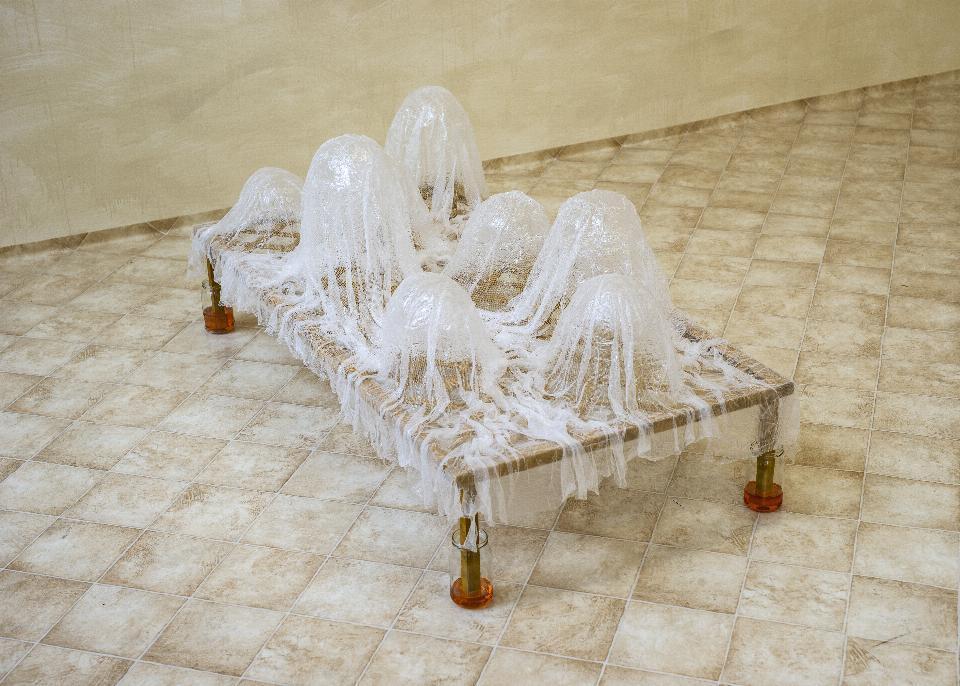Dominika Olszowy
Jars of honey in the foundations of the bed
Dominika OlszowyJars of honey in the foundations of the bed, 2020net curtains, wood, glass, epoxy resin, 75 × 187 × 95 cmCollection II of the Arsenal Gallery in Białystok. Work purchased by the Arsenal Gallery in 2022

The absurd-sounding title situates Dominika Olszowy’s installation on the borderline between a Surrealistic freedom of association and a Dadaistic randomness. This is because Jars of honey in the foundations of the bed is a translation of a passage from a Latvian folk song as offered by the Google Translate algorithm (here, additionally, translated from Polish into English). The song, and Olszowy’s work, are dedicated to Veļu Māte, the goddess of death or of the vela, the souls of the dead. In a literal translation, Veļu Māte is the Cloth Mother, or Bed Linen Mother, and the motif of a bed and the bowls of honey placed underneath is crucial to one of the texts dedicated to her.
Veļu Māte awaits the souls of the dead at the head of the bed or at the top of the grave mound. She is not a benign entity and she rejoices at a person’s death. In folk songs, she tries to lure the souls of the dead to her by dancing on their graves. She is depicted as an elderly woman wrapped in white linen clothes that cover her head and fall all the way to the ground. In paintings, she is represented as leaning over a dying man. Net curtains used by Olszowy in her work, fixed with epoxy resin into shapes resembling jellyfish or linen-wrapped heads, refer to those clothes – or to the washing hanging on the line. In her intention, the staged place is the goddess’ bedroom, an ambiguous and doubt-raising one; because, after all, does someone who awaits the souls of the dead have her own shelter, her own bed?
The work Jars of honey in the foundations of the bed was produced for the International Biennale of Contemporary Art in Riga (2020). The artist has referred to the local context: the folklore of the Baltic region. An attempt to understand the phenomenon of death lies at the core of many vernacular myths which aid in taming the inevitable. Making use of the figures of ghosts and goddesses, they convey elements of rituals that constituted an attempt to look into the unknown. Olszowy’s work is a tribute to those traditions; a recognition that the world of death belongs to the domain of the unfathomable. This is because all that lies outside the biological dimension of death – the spiritual aspect of passing away – escapes rational analysis, similarly to the folk beliefs and tales related to death. In this context, the ambivalence of cognition underlies both the ancient myths and the modern reflection on the life’s ending.

PLAN YOUR VISIT
Opening times:
Thuesday – Sunday
10:00-18:00
Last admission
to exhibition is at:
17.30